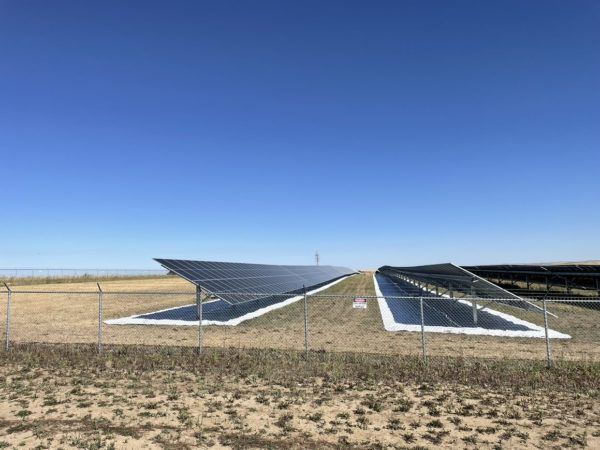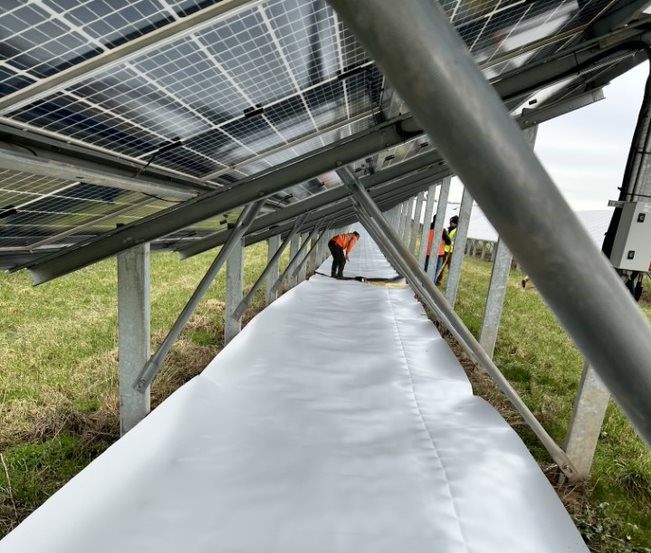Canadian company Solmax Geosynthetics, which supplies “geosynthetic drainage geocomposites” has developed a material that reportedly increases the albedo of the surface below a PV power plant by about 70%, allowing more light to reach the rear side of bifacial modules.
The material, made of polyethylene resins and coated with a thin white polyethylene layer that reflects ultraviolet (UV) rays, was initially designed for environmental protection by containing chemicals and hazardous waste.
“The increased albedo results in additional irradiance reaching the back of the module,” the company’s value engineer EMEA, Douglas Sutherland, told pv magazine. “The amount of irradiance will depend on the geometric characteristics of the plant.”
Called Geolux, the new product consists of a reflective geomembrane made of polyethylene resins and coated with a thin white polyethylene layer that reflects UV rays. According to Solmax, which already has an established presence in Australia, supplying geosynthetic products to mining, waste management, and civil engineering sectors, the material is inert and will not cause any chemical reaction with the ground.
“Geolux can improve the energy yield between 5 to 20% which means an equivalent levelized cost of energy (LCOE) reduction of around 2% to 5%,” Sutherland said.
“In the end, the main limiter for the extra energy benefit is the AC capacity. The question is now whether it is convenient or not to modify the AC capacity. This must be addressed by performing a trade-off between the extra energy generated and the costs associated with the AC capacity increase.”

According to Sutherland, developers could evaluate the impact of the new product at the early stages of project development using the albedo-app function in the PVradar software.
“Design parameters such as the AC capacity can be optimised to ensure that the PV plant owners get the most out of the albedo enhancement,” he said.
At least two people are needed to install the membrane and a sharp blade such as a knife is needed to cut it. Gripple pins are used to ensure the material is held firmly in place.
In terms of total project costs, the new product would mean USD 0.024 per W of additional capital expediture.
“Using our experience on a 500 MW project in the Middle East, accounting for recent inflation, it would cost approximately USD 12 million ($18 million) for the entire project,” Sutherland said. “It was USD 8 million ($12 million) two years ago and hopefully prices will drop again in the future.”
Sutherland said the material, which has a lifespan of at least 30 years, also prevents weed growth beneath the modules, offering significant O&M savings.
This content is protected by copyright and may not be reused. If you want to cooperate with us and would like to reuse some of our content, please contact: editors@pv-magazine.com.










1 comment
By submitting this form you agree to pv magazine using your data for the purposes of publishing your comment.
Your personal data will only be disclosed or otherwise transmitted to third parties for the purposes of spam filtering or if this is necessary for technical maintenance of the website. Any other transfer to third parties will not take place unless this is justified on the basis of applicable data protection regulations or if pv magazine is legally obliged to do so.
You may revoke this consent at any time with effect for the future, in which case your personal data will be deleted immediately. Otherwise, your data will be deleted if pv magazine has processed your request or the purpose of data storage is fulfilled.
Further information on data privacy can be found in our Data Protection Policy.